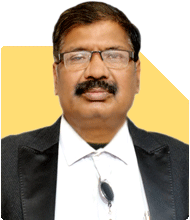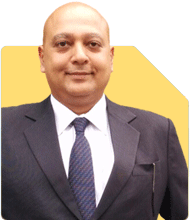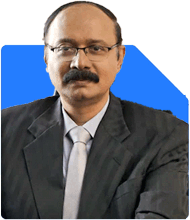Ramalingam Kalirajan |7758 Answers |Ask -Follow
Mutual Funds, Financial Planning Expert - Answered on May 23, 2024
He has an MBA in finance from the University of Madras and is a certified financial planner.
He is the director and chief financial planner at Holistic Investment, a Chennai-based firm that offers financial planning and wealth management advice.... more

I am a 31 year old working woman , my monthly income excluding taxes is 1.10 lakhs, i have a 1 year old kid. I am saving 30 k in mutual funds and around 5000 in nps and 5000 in ppf and 10000 in vpf .i also have a joint home loan of 50lakhs with husband. I want to retire in next 4 years. How can i generate a montly incomr of atleast 60k .
Current Financial Situation and Goals
At 50 years old and currently unemployed, you are at a pivotal point in your financial journey. Your wife, a lecturer, earns Rs. 60,000 per month. You have a daughter who aspires to study engineering and pursue postgraduate studies abroad. Your assets include Rs. 50 lakhs in fixed deposits, Rs. 5 lakhs in the share market, and a home worth Rs. 50 lakhs. You also have a home loan of Rs. 20 lakhs with an EMI of Rs. 20,000 for the next eight years. Additionally, you have term insurance of Rs. 1 crore and health insurance coverage of Rs. 10 lakhs.
Your proactive approach to securing term and health insurance, and investing in diverse assets, is commendable. This foundation will be crucial as you navigate your financial future.
Assessing Employment vs. Business
Job Stability
Opting for a job can provide a stable income stream. This stability is essential for meeting ongoing expenses, including the home loan EMI and your daughter's education.
Starting a Business
Starting a business involves risks but can offer higher returns. Evaluate your risk tolerance, potential business opportunities, and market conditions before making a decision.
Insurance Coverage
Term Insurance
Your term insurance of Rs. 1 crore is adequate for now. Ensure that this coverage remains sufficient as your financial situation changes.
Health Insurance
A health insurance cover of Rs. 10 lakhs is good. Consider increasing this coverage due to rising healthcare costs and your age.
Managing Existing Investments
Fixed Deposits
Fixed deposits provide safety but offer lower returns. Consider diversifying some of your FD investments into higher-yielding options.
Share Market Investments
With Rs. 5 lakhs in the share market, review the performance of these investments. Regular monitoring and rebalancing can enhance returns.
Home Loan Management
Reducing EMI Burden
Your home loan EMI is Rs. 20,000 for the next eight years. Consider making lump-sum payments towards the principal to reduce the EMI burden and interest outgo.
Balance Transfer
Explore the option of a home loan balance transfer to a lender offering a lower interest rate. This can reduce your EMI and overall interest burden.
Daughter’s Education Planning
Engineering and PG Abroad
Education costs, especially abroad, can be substantial. Start a dedicated education fund for your daughter. Invest in diversified mutual funds to accumulate the required corpus.
Asset Management
Flat, Gold, and Plot
Your assets amount to Rs. 50 lakhs. Ensure they are effectively utilized or can be liquidated when needed for significant expenses like education or emergencies.
Investment Strategy
Diversification
Diversify your investments across asset classes to manage risk and optimize returns. Consider a mix of equity, debt, and hybrid funds.
Regular Investments
Continue regular investments through SIPs. This will help in rupee cost averaging and building a substantial corpus over time.
Evaluating Direct vs. Regular Funds
Disadvantages of Direct Funds
Direct funds save on commissions but lack personalized guidance. Professional advice from a Certified Financial Planner (CFP) can provide strategic insights and help in making informed decisions.
Benefits of Regular Funds
Investing through regular funds ensures you receive expert advice. This optimizes your portfolio for better returns and risk management.
Retirement Planning
Building a Retirement Corpus
Plan to build a substantial retirement corpus. Regularly invest in a mix of equity and debt funds, considering your risk tolerance and time horizon.
Systematic Withdrawal Plan
Consider a Systematic Withdrawal Plan (SWP) post-retirement. This will provide a steady income stream while keeping your investments growing.
Emergency Fund
Importance of Liquidity
Maintain an emergency fund equivalent to 6-12 months of expenses. This provides liquidity and financial stability during unforeseen events.
Professional Guidance
Certified Financial Planner (CFP)
Engage a Certified Financial Planner for personalized financial advice. They can help you navigate complex financial decisions and achieve your long-term goals.
Conclusion
Balancing immediate financial needs with long-term goals is crucial. Diversify investments, reduce debt, and plan for significant expenses like education. Regularly review and adjust your financial plan to stay on track.
Best Regards,
K. Ramalingam, MBA, CFP,
Chief Financial Planner,
www.holisticinvestment.in
You may like to see similar questions and answers below
Ramalingam Kalirajan |7758 Answers |Ask -Follow
Mutual Funds, Financial Planning Expert - Answered on May 17, 2024
Ramalingam Kalirajan |7758 Answers |Ask -Follow
Mutual Funds, Financial Planning Expert - Answered on May 16, 2024
Ramalingam Kalirajan |7758 Answers |Ask -Follow
Mutual Funds, Financial Planning Expert - Answered on May 25, 2024
Ramalingam Kalirajan |7758 Answers |Ask -Follow
Mutual Funds, Financial Planning Expert - Answered on Dec 23, 2024
Rajesh Kumar Singh |47 Answers |Ask -Follow
IIT-JEE, GATE Expert - Answered on Feb 01, 2025
Dr Nagarajan Jsk |224 Answers |Ask -Follow
NEET, Medical, Pharmacy Careers - Answered on Feb 01, 2025
Dr Nagarajan Jsk |224 Answers |Ask -Follow
NEET, Medical, Pharmacy Careers - Answered on Feb 01, 2025
Radheshyam Zanwar |1168 Answers |Ask -Follow
MHT-CET, IIT-JEE, NEET-UG Expert - Answered on Feb 01, 2025
Sushil Sukhwani |576 Answers |Ask -Follow
Study Abroad Expert - Answered on Feb 01, 2025
Sushil Sukhwani |576 Answers |Ask -Follow
Study Abroad Expert - Answered on Feb 01, 2025
Sushil Sukhwani |576 Answers |Ask -Follow
Study Abroad Expert - Answered on Feb 01, 2025
Anil Rego |384 Answers |Ask -Follow
Financial Planner - Answered on Feb 01, 2025
Anil Rego |384 Answers |Ask -Follow
Financial Planner - Answered on Feb 01, 2025
Anil Rego |384 Answers |Ask -Follow
Financial Planner - Answered on Feb 01, 2025























